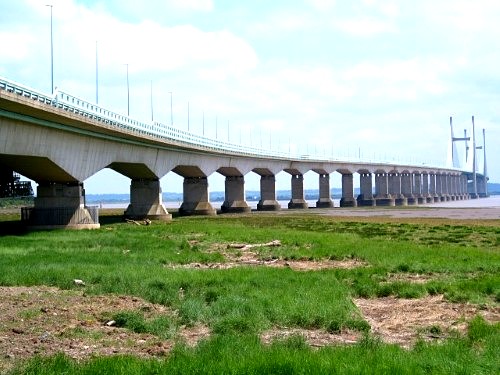
Occasionally somewhere works its place into your imagination long before you ever actually visit it; that’s how it was for me with Caldicot Castle
I can vividly recall my parents setting off to a medieval banquet, my mother in a full-length black halter-neck dress (this was the early 70s), my father with his sideburns, pastel shirt and patterned tie.
The next day, they talked enthusiastically of drinking mead from goblets, of tearing great hunks of meat apart with their hands, of being served by singing maidens; but most exciting of all, the magnificent location of their olden-style feast.
We didn’t have a car so it was many years before I visited Caldicot Castle myself; but when the day finally came and I crossed the (metaphoric) drawbridge and entered the castle bailey, I was equally impressed.

Castles Wales suggests the castle is ‘perhaps one of Wales’ best kept secrets’ and it’s easy to understand their sentiment (if you’re interested in castles it’s well worth visiting the website yourself as it boasts lots of fascinating historic information as well as excellent photographs).
Caldicot is everything a castle should be, so it’s surprising that, in 2013, entry remains free. Unusually, it’s managed by its owners Monmouthshire County Council rather than Cadw, the organisation which preserves most of Wales’ historic buildings and archaeological sites.
This ‘castle within a castle’ looks rather forbidding from the outside, but once inside its boundary walls, you’ll find yourself on a large lawn facing a 13th century Norman round keep (thought to be built on the site of an earlier Saxon stronghold).
If you spin around, you’ll be facing what is basically a Victorian manor house, built by the wealthy antiquarian, J R Cobb. Cobb purchased the castle ruins in 1885 and set about restoring them. Castle Wales explains ‘what we see today is an appropriate mix of the old and the restored, for most of the original stonework and design was left intact – at least to the greatest extent that was possible’.

I think it’s fair to say that the people of Wales owe a massive debt of gratitude to the forward-thinking Mr Cobb, who also responsible for the restoration of Manorbier and Pembroke castles in Pembrokeshire (both of which Harri and I hope to visit later this year when we research and walk routes for another castles book).
As soon as we parked, Harri and I began reminiscing about previous (separate) visits.
I recalled the ill-fated sponsored walk from the castle I helped to organise in 2003 to coincide with Ian Botham’s long-distance walk through south east Wales; despite months of planning, massive efforts by all involved and real, live llamas at the start, the walk wasn’t well-supported by Monmouthshire council staff or local people and we ended up raising a paltry amount for the Noah’s Ark Appeal.

Harri’s memory was much more poignant. He’d attended an event as a child and, during a display by an Eastern European troop, the dancing bear got annoyed and ran off. People were screaming and running in all directions; all except one large lady who stood rooted to the spot and, as a result, was knocked over by the fleeing bear. The poor bear must have been terrified – thank goodness this cruel practice is no longer seen as entertainment in most countries.
We visited Caldicot Castle on my birthday – for once a glorious summer’s day (to clarify, the date doesn’t switch from spring through to winter, just the weather). My legs still ached from the previous day’s Rack Raid so we opted to do one of the shorter, flatter walks in our first Walks from Castles book – an undemanding eight mile route starting from the castle entrance.

We meandered through Portskewett, past the pretty St Mary’s church and into lush, flower-filled meadows. Heavenly. After a few miles we reached the Wales Coast Path (this was the stretch that Harri and I walked two summers ago before he was commissioned to write the official guide for the Amroth to Swansea section). It’s not the prettiest part of Wales’s coastline (too much mud!); however, there are some interesting sections, like Black Rock (where there’s evidence of a recent rock fall) and walking underneath the busy Second Severn Crossing (and there’s no toll charged in either direction for walkers!).

Sudbrook is an intriguing little place too. Most of the village was built for workers on the Severn Tunnel back in the 1870s; the old red-brick pump house for the tunnel remains today.
We ended the afternoon with a much-needed rest outside the surprisingly busy Castle Inn, just a stone’s throw from the castle itself. Not a silver goblet in sight, but the Stowford Press cider went down a treat.
Discover more from tracyburton.co.uk
Subscribe to get the latest posts sent to your email.
